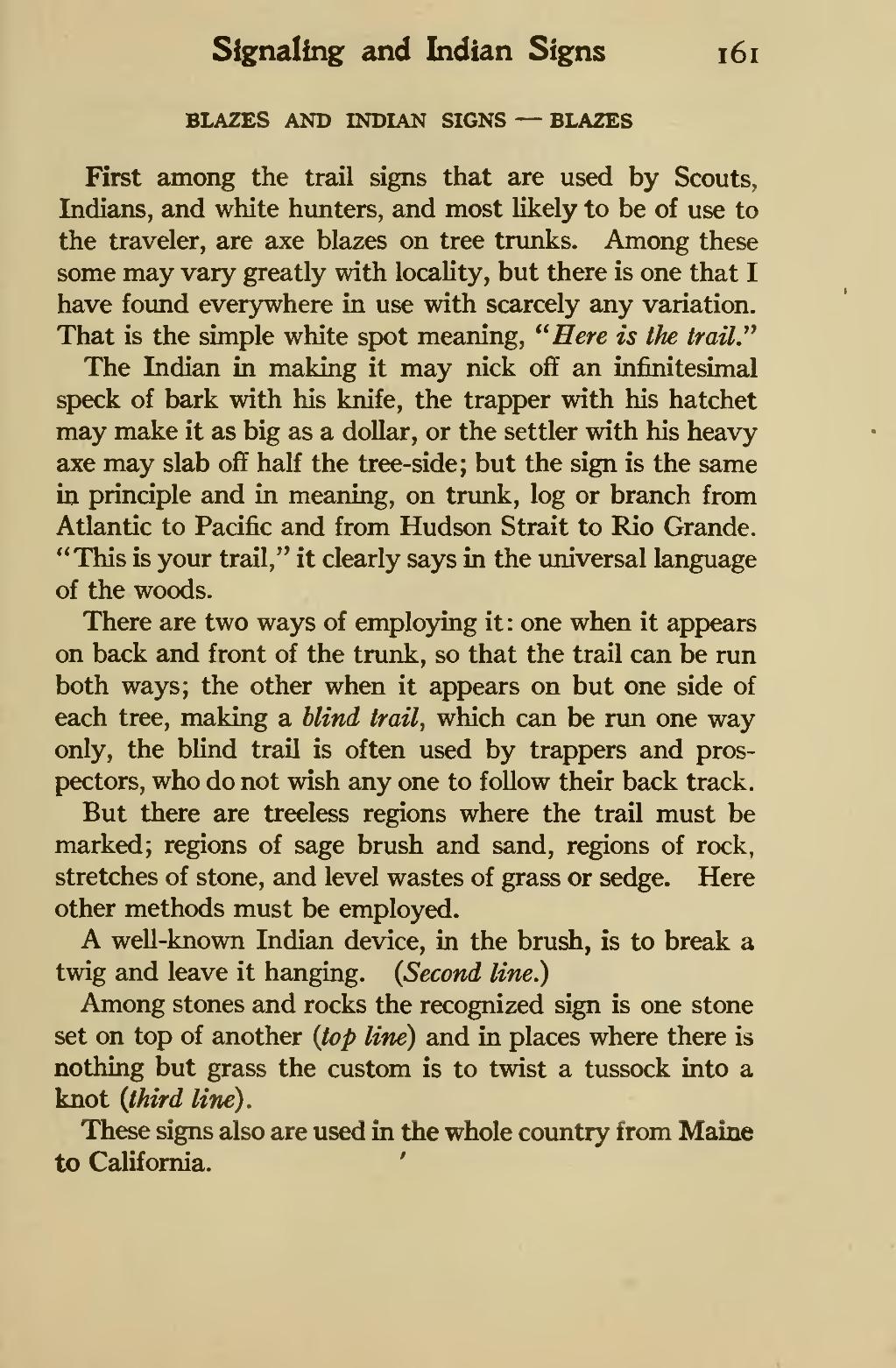Signaling and Indian Signs i6i BLAZES AND INDIAN SIGNS — BLAZES First among the trail signs that are used by Scouts, Indians, and white hunters, and most likely to be of use to the traveler, are axe blazes on tree trunks. Among these some may vary greatly with locality, but there is one that I have found everywhere in use with scarcely any variation. That is the simple white spot meaning, ^^Here is the trail." The Indian in making it may nick off an infinitesimal speck of bark with his knife, the trapper with his hatchet may make it as big as a dollar, or the settler with his heavy axe may slab off half the tree-side; but the sign is the same in principle and in meaning, on tnmk, log or branch from Atlantic to Pacific and from Hudson Strait to Rio Grande. This is your trail," it clearly says in the universal language of the woods. There are two ways of employing it : one when it appears on back and front of the trunk, so that the trail can be run both ways; the other when it appears on but one side of each tree, making a blind trail, which can be run one way only, the blind trail is often used by trappers and pros- pectors, who do not wish any one to follow their back track. But there are treeless regions where the trail must be marked; regions of sage brush and sand, regions of rock, stretches of stone, and level wastes of grass or sedge. Here other methods must be employed. A well-known Indian device, in the brush, is to break a twig and leave it hanging. {Second line.) Among stones and rocks the recognized sign is one stone set on top of another {top line) and in places where there is nothing but grass the custom is to twist a tussock into a knot {third line). These signs also are used in the whole country from Maine to California. '
Stránka:book 1922.djvu/191
Z thewoodcraft.org
Tato stránka nebyla zkontrolována
